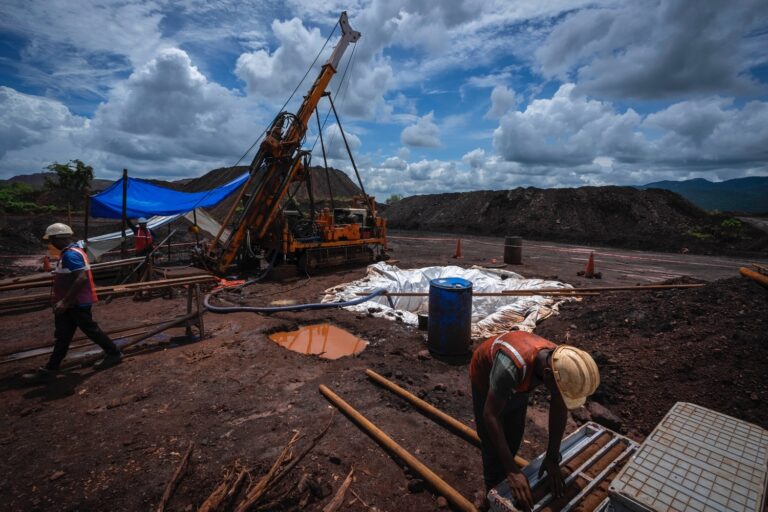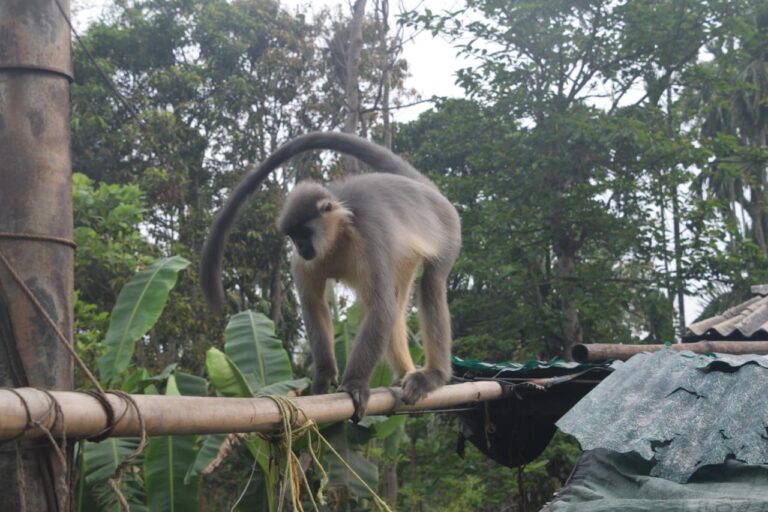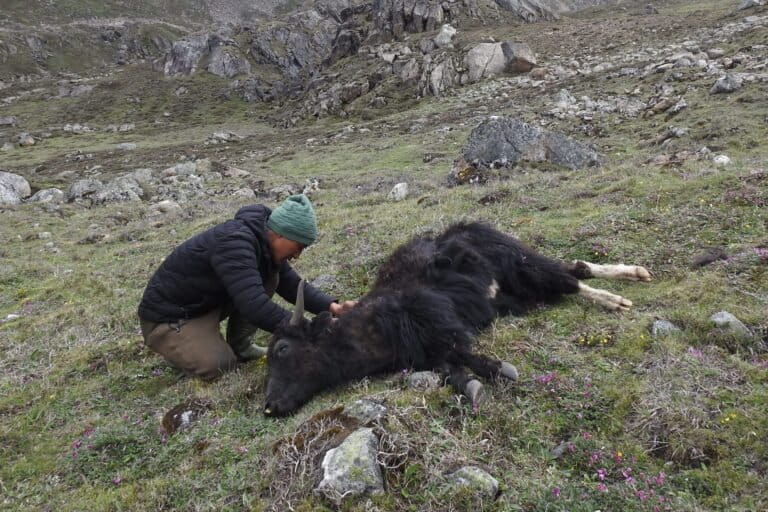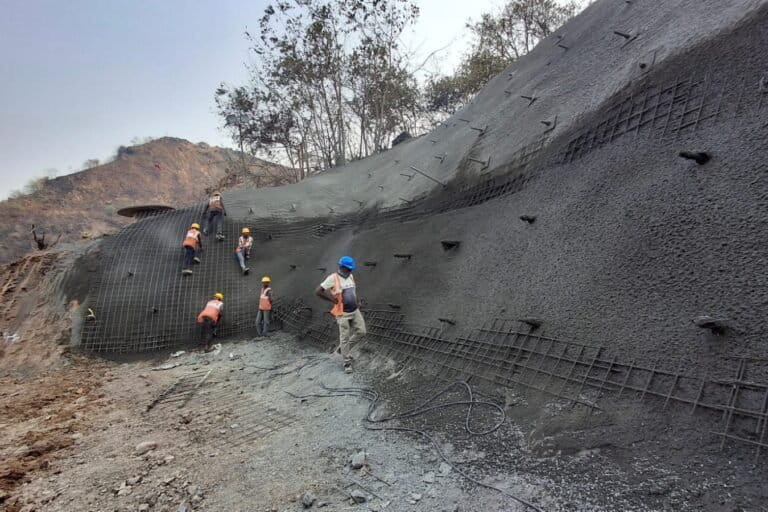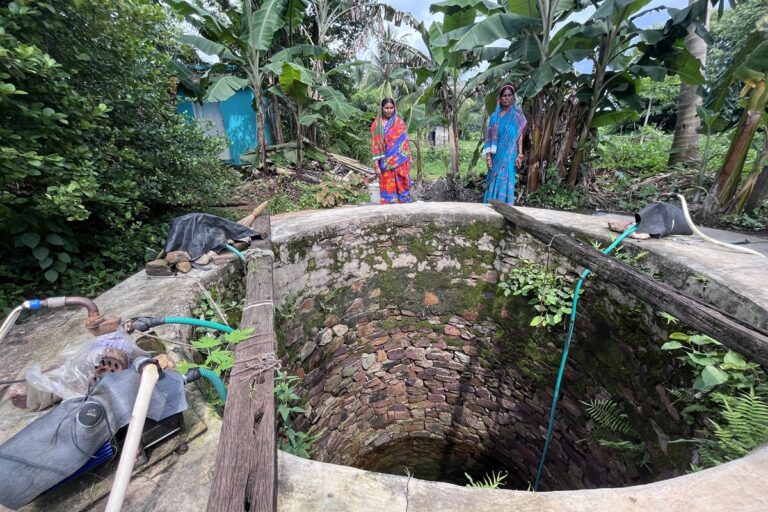- Panaji, the capital city of Goa, was hit by floods in July 2021. Historically, this is not the first time that the city has been flooded since it is built on the marshlands on the floodplains of river Mandovi.
- Recent construction and urban expansion do not keep in mind the city’s flood vulnerability. Also, with the fresh and saline water exchange blocked by these constructions, the mangroves have been on the decline.
- On World Water Day, this commentary stresses on the importance of living within the ecosystem and promoting nature-based solutions in urban development.
- The views expressed in this commentary are that of the authors.
Leaving Panaji, Goa’s capital city, for the airport, one drives past a large swathe of lifeless bare trees standing in a shallow black water swamp. This was once a verdant patch of white mangroves (Avicennia marina) that fringed the vibrant backwaters of the Ourem creek, a tributary of the Mandovi river. The creek’s name comes from the word “Ouro” meaning “like gold”, an indication that this was once a thriving waterway that supported a vibrant artisanal fishery.
The creek flows through agricultural landscapes called the khazan lands, which were reclaimed from the mangroves. In the khazan lands, a series of bunds and dykes prevent the saline waters from entering the rice fields, while facilitating the creek’s free flow and allowing the mangroves to persist along the water’s edge. However, a newly built road along with a number of flyovers obliterated this free-flowing brackish water way, blocking the regular ebb and flow of the tides, crucial to the survival of this uniquely adapted vegetation.
These salt-loving trees now stand like greyish white skeletons in a stagnant marsh, emitting sulphurous belches like the stench of eggs gone bad. This formerly flourishing ecosystem that was a mosaic of productive agricultural landscapes and freshwater wetlands which harboured a diversity of waterfowl is now taken up by more resilient generalists like house crows, little cormorants, and egrets. A colony of flying foxes have made these bare trees their roost, from where they set out at dusk in search of fruit, the main food of these large frugivorous bats.
A poignant community art project aptly called Mangrave:(En)circling the loss through a series of performances, recently highlighted the plight of this ecosystem. But why is safeguarding and restoring degraded mangrove patches, such as these, so important beyond the aesthetics and nostalgia?

The perfect storm
In July 2021, when Goa was still grappling with the COVID-19 pandemic, it was hit by among the worst floods witnessed in decades. Incessant rains caused the rivers to swell up, engulfing and damaging homes and properties worth crores of rupees. Villages along the Mandovi river were badly affected and Panaji, as a result, was not spared either. Although an event of this magnitude is not an annual occurrence, the warning bells had been ringing for a while now.
It is believed that Panaji gets its name from the word Panaz, which translates to an area that gets waterlogged (Gomes, 2005). Before it became Goa’s capital in 1843, most of the city was low-lying marshlands along the flood plains of the Mandovi, with only a few fishing settlements scattered along its banks. During this time, one could approach the city only using river transport, even from the former capital of Old Goa. In 1634, the Count of Linhares causeway was built to connect Old Goa to Panaji. This 3.2 kilometre-bridge was built over the floodplains of the Mandovi, taking into account the tidal levels and constructing a series of arches to allow for the free flow of water below.
Read more: How falling groundwater levels compact the land above
Beginning from the latter half of the nineteenth century, these marshlands were reclaimed to expand the city but this was done keeping in mind the risks of flooding. First, an intricate system of drains were constructed to allow for the draining of stormwater into the creeks which connected to the Mandovi river and ultimately to sea. Second, two of the main tidal creeks, the St. Inez and the Ourem creeks, which connected to the city’s stormwater drainage, had their banks built and reinforced with the laterite brick and their channels preserved to allow for the free flow of water. Third, several large open public gardens and green spaces were created as soak areas to absorb excess rainfall and water that slowly made its way down from the forested slopes of the Altinho hill.
Finally, not only were the expansive Khazan lands safeguarded by law and maintained exclusively to produce food, but they also performed other important services as buffers to floods. The city’s expansion was designed to be future proof and was aligned with nature.
Urban expansion
On the contrary, recent urban development hasn’t followed the same consciousness. Urbanisation, driven by a rapid increase of Goa’s urban population, has spilled over to Panaji’s neighbouring rural areas to accommodate real estate pressures. According to estimations by the Ministry of Housing and Urban Affairs, Goa’s urban population is expected to grow to 88% in 2036 from the current 62.5%. Unsurprisingly, this sprawl has diminished the city’s green cover as repurposed Khazan farmlands at the fringes of the city have transformed into a concrete jungle along primary arterial roads leading to the city.
All of this might result in increased stormwater runoffs from impervious surfaces ultimately causing localised flooding. Take for example the St. Inez creek, a waterway maintained to flow freely over the last two centuries, currently lies in a state of neglect. It is now choked at various points with the solid waste and sludge dumped from various parts of the city as well as silt pushed in by the Mandovi that it drains into. The now polluted and stagnant waterways aid invasive and rapidly spreading floating vegetation like the water hyacinth, further worsening the problem. All it takes is a heavy spell of rain for the creek to overflow, inundating roads in several parts of the city while bringing with it the trash and the sewage.

Designing with nature
This story is not unique to Panaji. India’s urban population is estimated to have doubled over the last 20 years and this growth has taken place in the form of urban sprawl with rapid expansion into adjacent peri-urban or rural areas.
The current planning paradigm in most Indian cities prioritises habitation and speculative development at a considerable cost to nature: anthropogenic drivers like extraction of natural resources, changing land use, rapid population growth and encroachment into natural areas are exacerbating cities’ risks to climate change by disrupting ecological processes and the way that natural landscapes function.
Given the risks that India’s cities face in light of climate change, it’s clear that urban planners, designers and decision-makers need to abolish this duality of nature and development and mitigate climate risks by leveraging the value of nature.
Read more: Chennai’s fight to preserve its wetlands and stay above water
Unfortunately, engineering and hard infrastructure solutions are the default options to combat climate challenges in cities across the world. From Venice’s elaborate MOSE project to New York City’s 10 miles of berms and walls as part of the BIG U, it’s clear that infrastructure projects are costly to build, operate and maintain and risk becoming redundant as climate projections evolve. In India, experiments with smaller scale sea walls have provided temporary relief to specific communities, but unprotected areas began to experience erosion and flooding.
On the other hand, nature-based solutions (NbS) are initiatives to protect, sustainably manage and restore natural or modified ecosystems, which address societal challenges effectively and adaptively, while simultaneously providing human well-being and biodiversity benefits. Nature-based solutions have great potential for cities to address climatic and societal challenges like urban flooding, cyclones and even water scarcity, if implementation and management are based on sound ecological principles.
Panaji, for example, could benefit from the restoration of tidal creeks, like the Ourem or St. Inez, as this would improve storm water drainage by supplementing the city’s existing systems during a cloud burst.
Our urban future
Panaji itself stands at a very interesting point in time where not all is lost. Lush mangroves continue to fringe large sections of the Ourem creek which continues to live up to its name as it lights up golden-orange with every sunset. A few artisanal fishers continue to fish these waters for some of Goa’s favourite seafood including mud crab, shrimp, mangrove red snapper, jack and asian seabass. Playful smooth-coated otter still play and feed from these waters. And, if you are lucky, you can spot the odd marsh crocodile basking on the banks of the St. Inez creek, even in its most polluted section in Camrabhatt. The fertile lands of Taleigao continue to supply the city with some of the finest vegetables in the state.

Most importantly these areas should never be looked at as blank spots on the map to be filled by speculative real estate development, but as nature-based solutions crucial to survival of this city in the face of the vagaries of climate change. It’s clear that business-as-usual planning and development pathways have deleterious impacts for society and the environment.
Learning to live with, rather than against nature is an essential planning and design principle that must be mainstreamed and normalised within planning education, capacity development and practice. Communities who live and work these areas should be incentivized for the very important service they provide the city by safeguarding these spaces.
Hopefully, one day, the “Mangrave” itself can be restored from bare tree skeletons to the lush forest patches they were if its connection with the tidal channels is restored. It is time to decide whether we want to build with nature or against it.
CITATION:
Gomes, B.M., 2005. Vosaad: The socio-cultural force of water (a study from Goa). Sociological Bulletin. 54, 250–276.
Aaron Savio Lobo is a marine conservation scientist working as the senior advisor for the Wildlife Conservation Society´s marine program in India. Ashali Bhandari is a senior urban planner at Transitions Research. Her work reimagines the future of India’s rapidly growing cities as vibrant, resilient and equitable places to live. Karthikeyan Kuppu is an urban planner working in technology and strategy consulting to solve future mobility issues and challenges.
Banner image: The Mangrave: A community art project, titled “Mangrave (En)circling the Loss” by The Earthivist Collective highlights the plight of this important ecosystem on the outskirts of Panaji. Photo by The Earthivist Collective.






